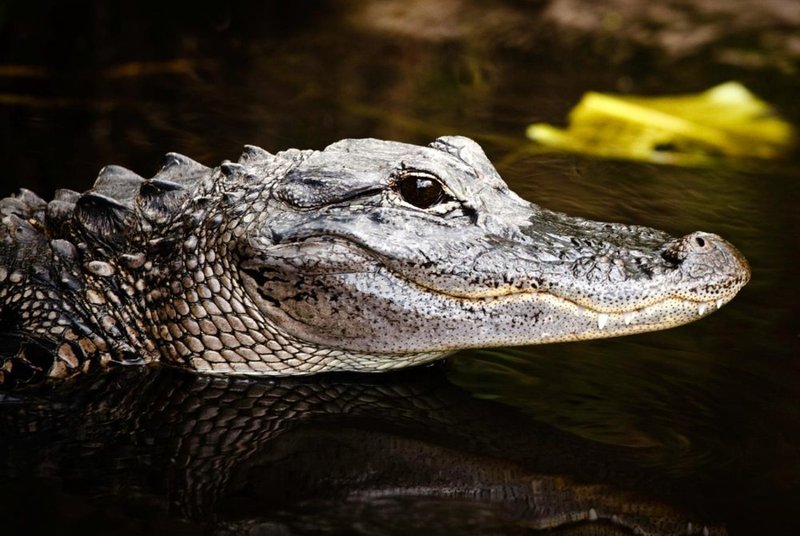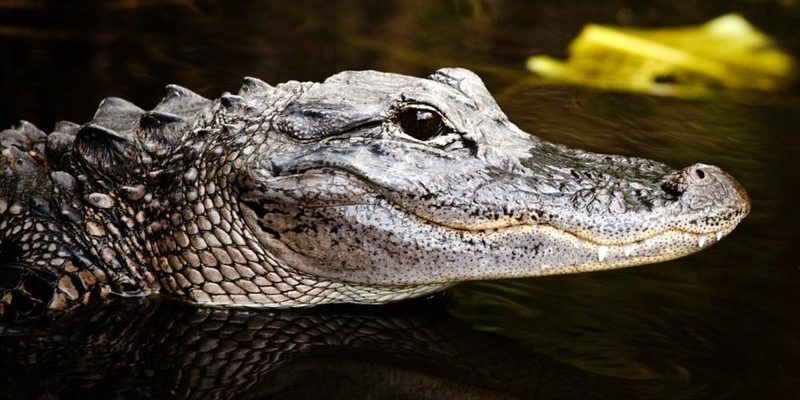
Let’s take a deeper dive into the world of alligators. From their unique adaptations to surprising social behaviors, you might find yourself learning new things about these ancient beings. So, grab a comfy seat and a cup of coffee while we explore ten captivating facts about alligators that you probably didn’t know!
1. They Have Been Around for Millions of Years
Alligators are often referred to as “living fossils,” and there’s a good reason for that. They’ve existed for over 200 million years. That’s right! They were around long before dinosaurs roamed the planet. Their ancestors were swimming in waters while the first flowers were just beginning to bloom.
Picture an alligator as a sort of time traveler, one that has managed to thrive through countless changes in climate and environment. While many species have come and gone, alligators have adapted, making them one of the most successful reptiles in history. They’ve weathered ice ages and massive shifts in sea levels, all while maintaining their iconic features. Isn’t it incredible to think about the history they carry?
2. Alligators Can Stay Underwater for an Hour
Have you ever tried holding your breath underwater? Most of us can manage about 30 seconds or maybe a minute. But alligators? They can hold their breath for up to one hour! This incredible ability allows them to stalk prey or avoid danger without ever needing to come up for air.
Alligators have special adaptations like a unique heart structure that helps them conserve oxygen. This is crucial when they’re lurking in the water, waiting for just the right moment to launch their attack. Imagine sneaking into a party unnoticed and then emerging at just the right time to grab the spotlight. That’s what alligators do every day!
3. They Have Powerful Jaws
When it comes to bite force, alligators are in a league of their own. Research shows that their jaws can exert a staggering 2,000 pounds of pressure per square inch. To put that in perspective, that’s enough to crush bones and tear through thick hides.
What might be even more surprising is that while alligators have some of the strongest bites in the animal kingdom, they can actually open their mouths with very little effort. The muscles that close their jaws are incredibly strong, but the muscles that open them are weak. This is why you might see a person easily hold an alligator’s mouth shut with their bare hands—it’s all about the mechanics.
4. They Are Social Creatures
You might picture alligators as solitary hunters, but the truth is they can be quite social, especially during mating season. They often gather in groups, which can be a bit of a surprise, right? These gatherings allow them to communicate using a variety of sounds.
From hissing to growling and even bellowing, alligators have a vocal repertoire that helps them establish territory and attract mates. It’s like they’re holding their own little social events! They also take part in care duties, with mothers protecting their hatchlings from predators. Imagine a tough alligator mom keeping a watchful eye on her brood—pretty heartwarming, isn’t it?
5. Their Color Changes With Temperature
Alligators are cold-blooded, meaning they rely on their environment to regulate their body temperature. This can lead to some fascinating color changes! When temperatures rise, their skin can take on a darker hue, while cooler temperatures can lighten their appearance.
Think about it: an alligator basking in the sun is like a painter adjusting their palette. They adapt to their surroundings, allowing them to blend into the water or mud. This clever camouflage helps them avoid detection by both prey and potential threats. It’s nature’s way of giving them a little boost!
6. They Use Tools
Believe it or not, alligators are among the few non-primate animals known to use tools. They’ve been spotted using sticks to lure birds, creating a clever trap. Picture this: an alligator lies still in the water with a stick nestled on its snout, waiting for an unsuspecting bird to land nearby. When it does, the alligator lunges!
This behavior shows a level of intelligence that many people don’t associate with reptiles. It’s not just about brute strength; they demonstrate problem-solving skills, which reflects their adaptability. Honestly, it’s pretty impressive!
7. Their Diet Is Diverse
While alligators are often seen as fearsome carnivores, their diet is actually more varied than you might think. They primarily eat fish, birds, and small mammals, but they’ve been known to munch on anything from turtles to even the occasional fruit if it’s floating nearby.
When food is scarce, they might even scavenge more unusual items. Imagine an alligator taking a break from its typical prey to snack on some fruit—it’s quite the contrast! This adaptability in diet helps them survive, no matter the circumstances. They can thrive in various habitats, which makes them resilient hunters.
8. Alligator Skin Is Highly Resilient
The skin of an alligator is a marvel in itself. Covered in thick, bony plates called osteoderms, their skin acts as a natural armor. These plates provide protection against predators and environmental hazards, making alligators tough cookies.
In fact, alligator skin is so durable that it’s often used in fashion for products like bags and belts. However, the demand for alligator leather raises ethical concerns about conservation. It’s a balancing act between appreciating their beauty and ensuring their survival in the wild. Here’s the thing: we need to be mindful of our impact on these amazing creatures.
9. They Can Live for Over 70 Years
Alligators are not just long-lived; they can reach ages of more than 70 years in the wild. That’s like watching your pet grow old while still managing to hunt like a pro! Their longevity can be attributed to their slow metabolism and ability to find food easily in their natural habitats.
The longer they live, the more stories they could tell about the changing world around them. They’ve seen environments evolve, interacted with various species, and weathered all sorts of challenges. It’s fascinating to think about the history each alligator carries, embodying decades of survival.
10. They Play an Important Role in Ecosystems
Lastly, alligators are vital to their ecosystems. As apex predators, they help maintain the balance of their habitats by controlling populations of fish and other animals. Their presence supports a healthy environment and promotes biodiversity.
When alligators dig holes in riverbanks, they create essential habitats for other species. These holes can become homes for fish and invertebrates, contributing to wider ecological networks. So, the next time you see an alligator lounging by the water, remember they’re not just a fearsome predator; they’re crucial for the health of their environment.
In conclusion, alligators are far more fascinating than they appear at first glance. From their incredible adaptations to their importance in ecosystems, these ancient reptiles tell a story of survival and resilience. So the next time someone brings up alligators, you’ll be armed with some pretty amazing facts to share! Who knew these creatures were so full of surprises?

